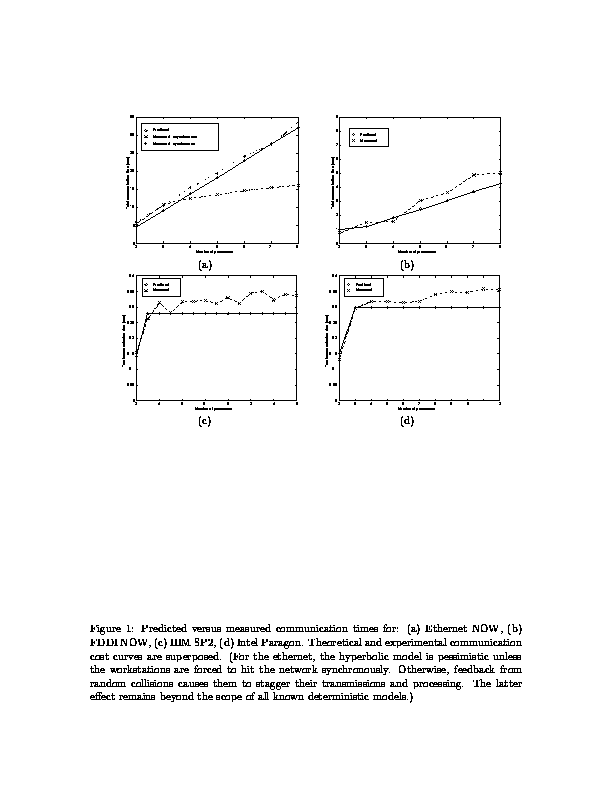NASA
High Performance Computing
and Communications Program
Computational AeroSciences Project
Evaluating the Hyperbolic Communication Model on a Variety of Architectures
Objective: Predict communication costs subject to contention in layered parallel architectures, such as tightly-coupled parallel computers or workstation clusters, with a model simple enough to apply to typical scientific codes.
Approach: The two-parameter "hyperbolic model" developed previously, compared with the n-half, LogP, and BSP models, and validated for communication templates common in parallel scientific computing, was applied to a time-parallel multigrid code describing unsteady two-dimensional Navier-Stokes.
Accomplishments: Communication costs analyzed theoretically with the model and measured experimentally were in good agreement on each of the four architectures below:
Ethernet workstation cluster of Sparcstations
FDDI workstation cluster of Sparcstations
IBM SP-2
Intel Paragon
Significance: The decreasing interconnectedness of commodity parallel hardware, from hypercubes to meshes to Ethernet, tends to greater contention and decreasing predictive power for simple communication models. On the other hand, complex ``first principles'' models are cumbersome to apply. The hyperbolic model is a set of combination rules for deriving latency and bandwidth parameters effectively seen by an individual message in a pattern of messages in a distributed architecture from the latency and bandwidth parameters of the layered communication network components. It strikes a practical compromise that takes contention into account in an average way.
Status/Plans: As new distributed environments become available, the hyperbolic model will be validated on them.
Contact:
David E. Keyes
ICASE, MS 403
NASA Langley Research Center
keyes@icase.edu
757-864-6873
Collaborators:
Ion Stoica, CS Department, ODU
Florin Sultan, CS Department, ODU
